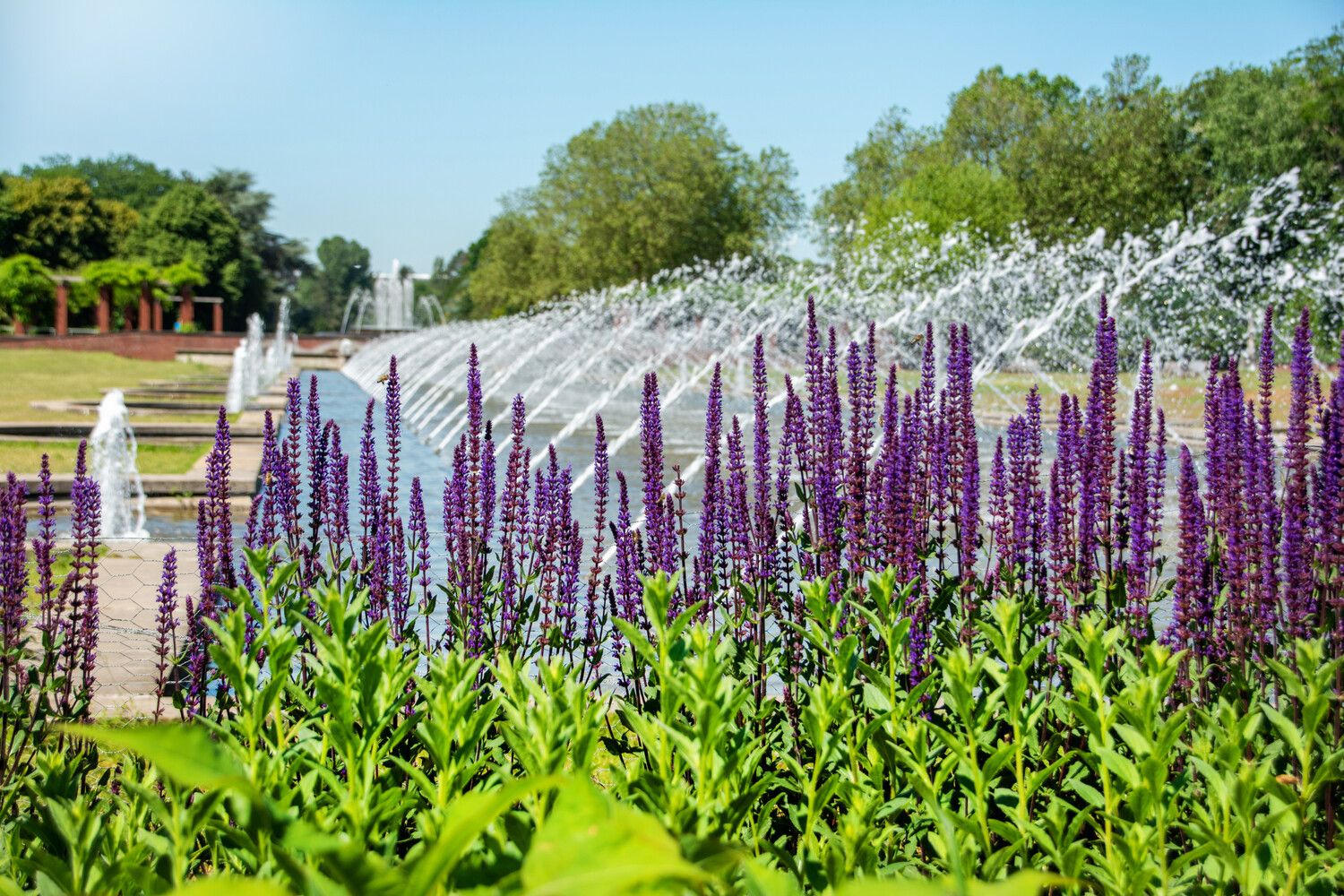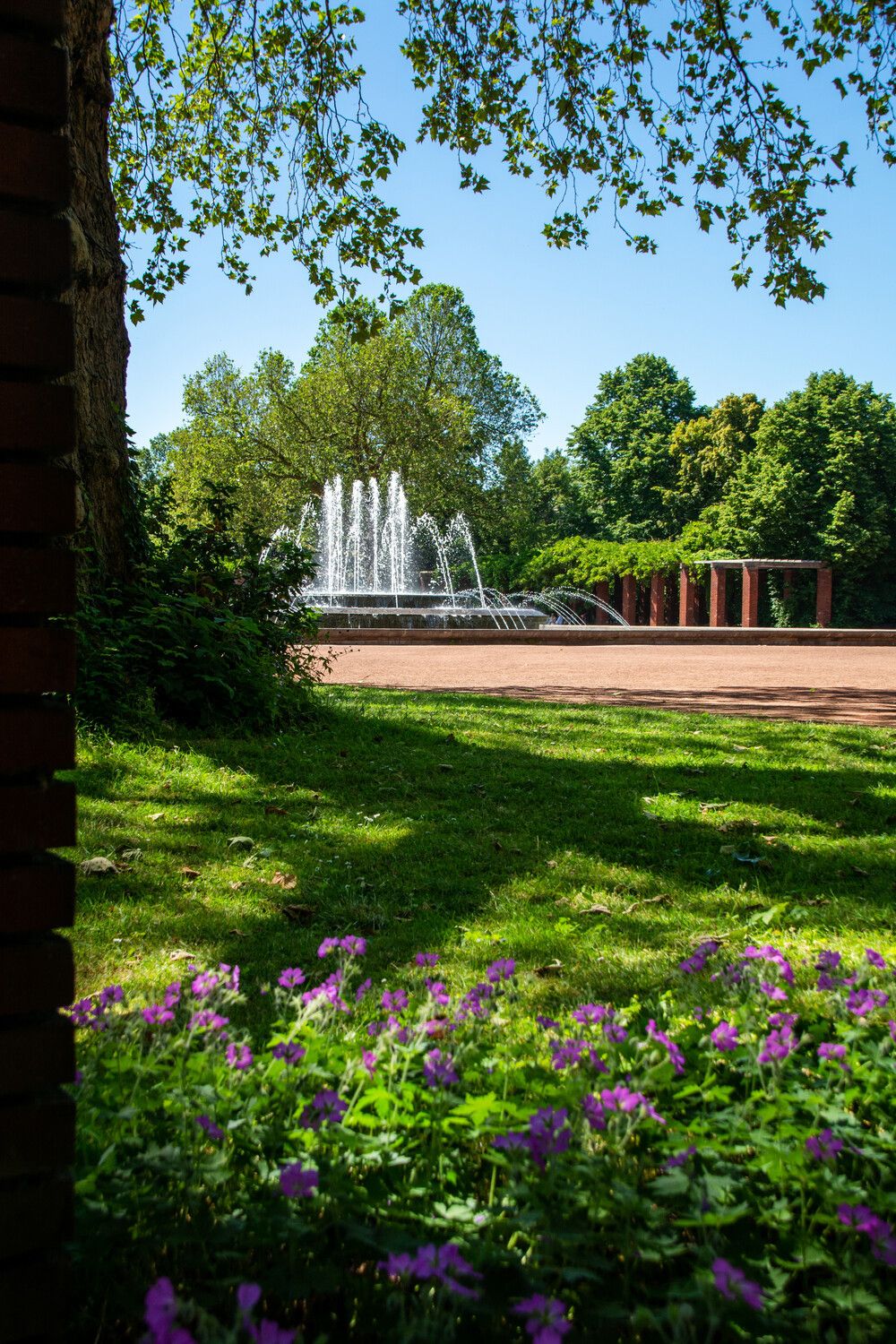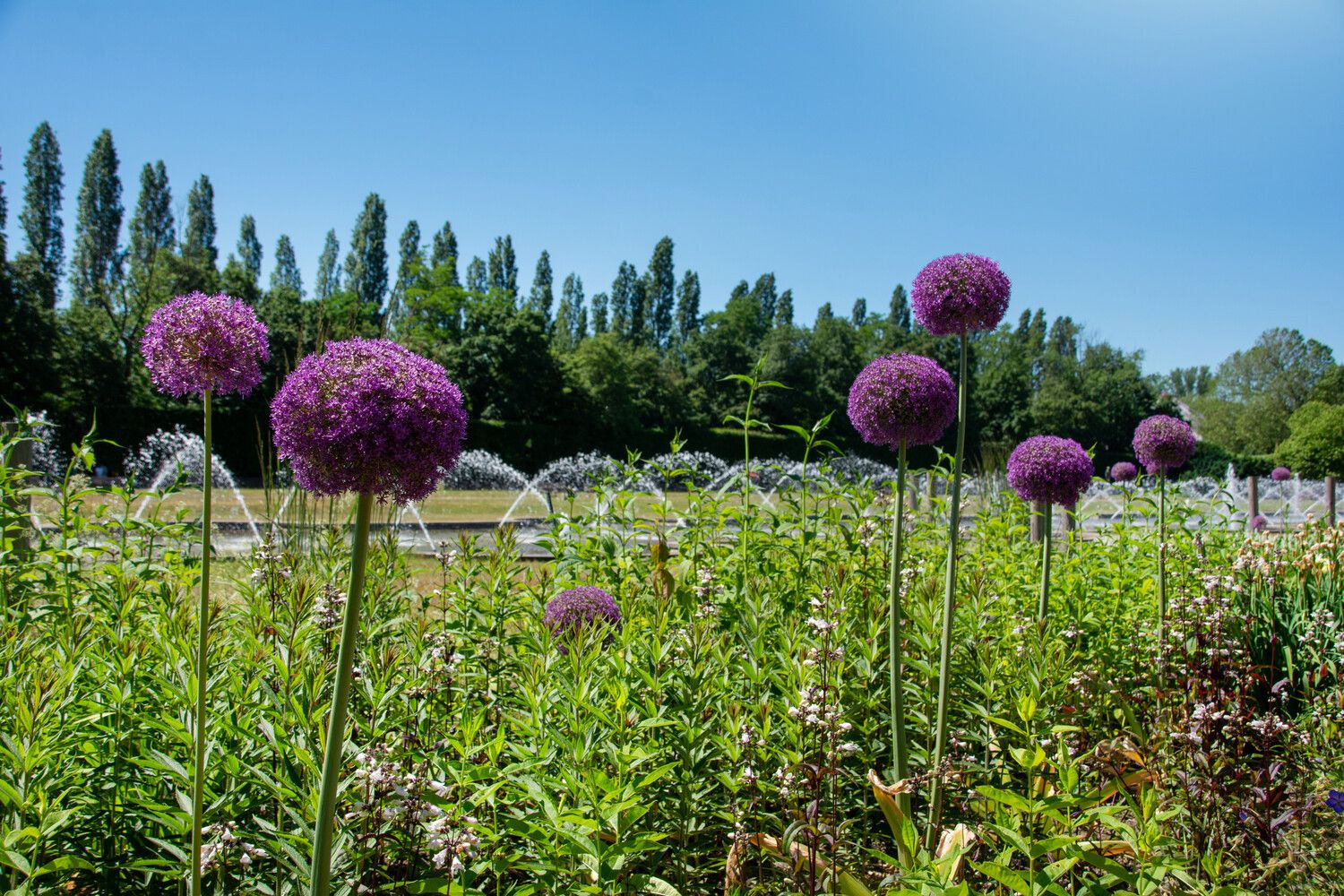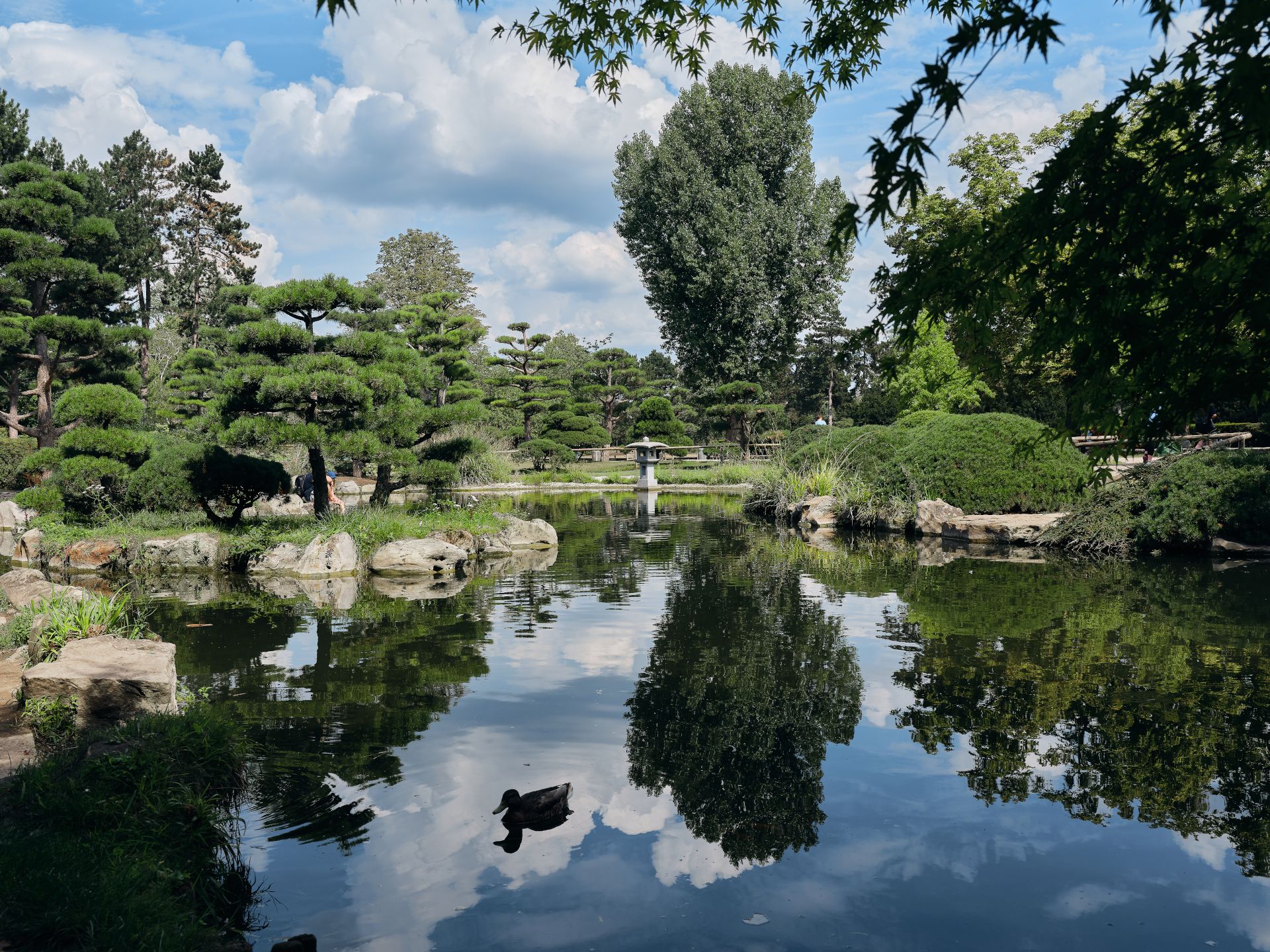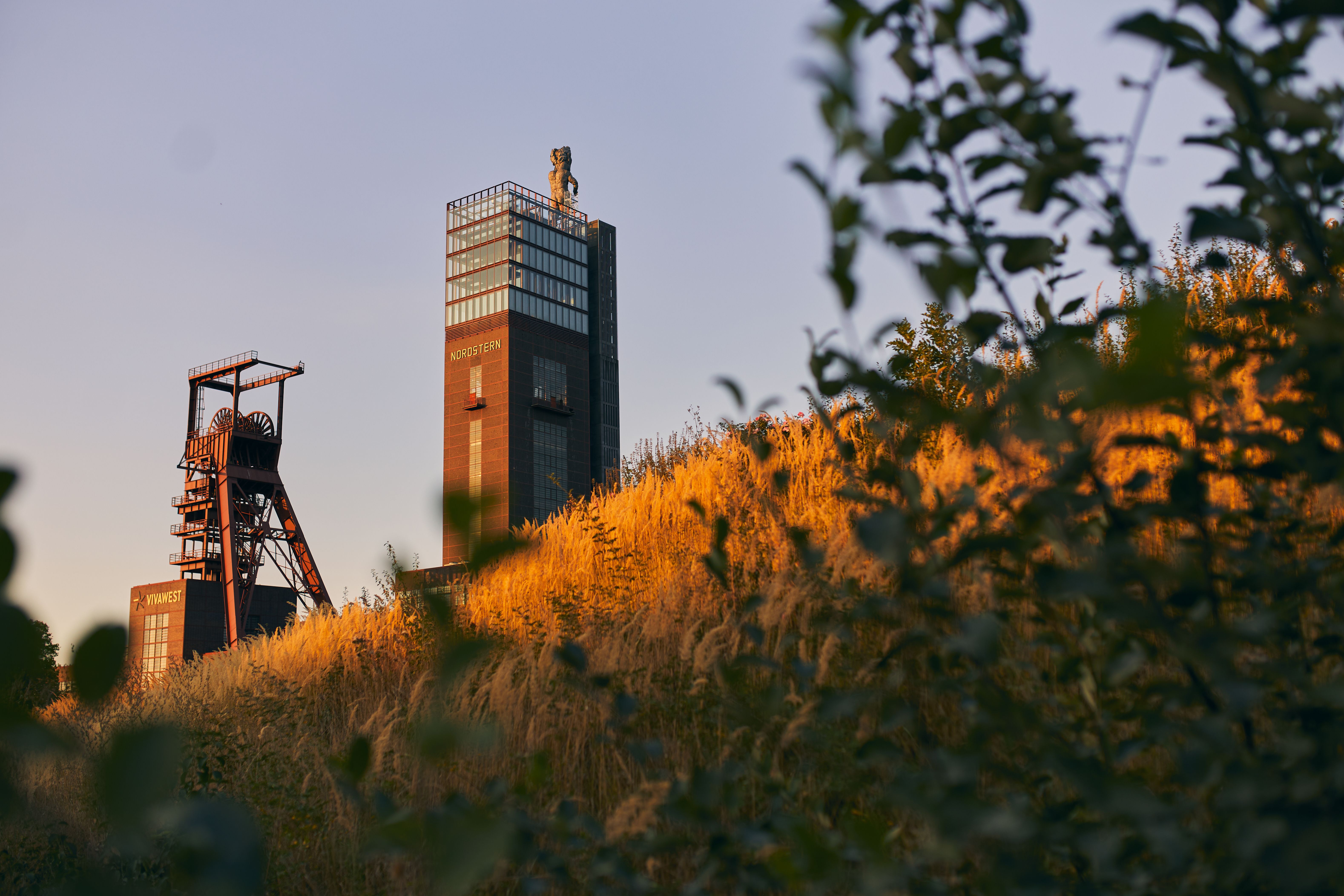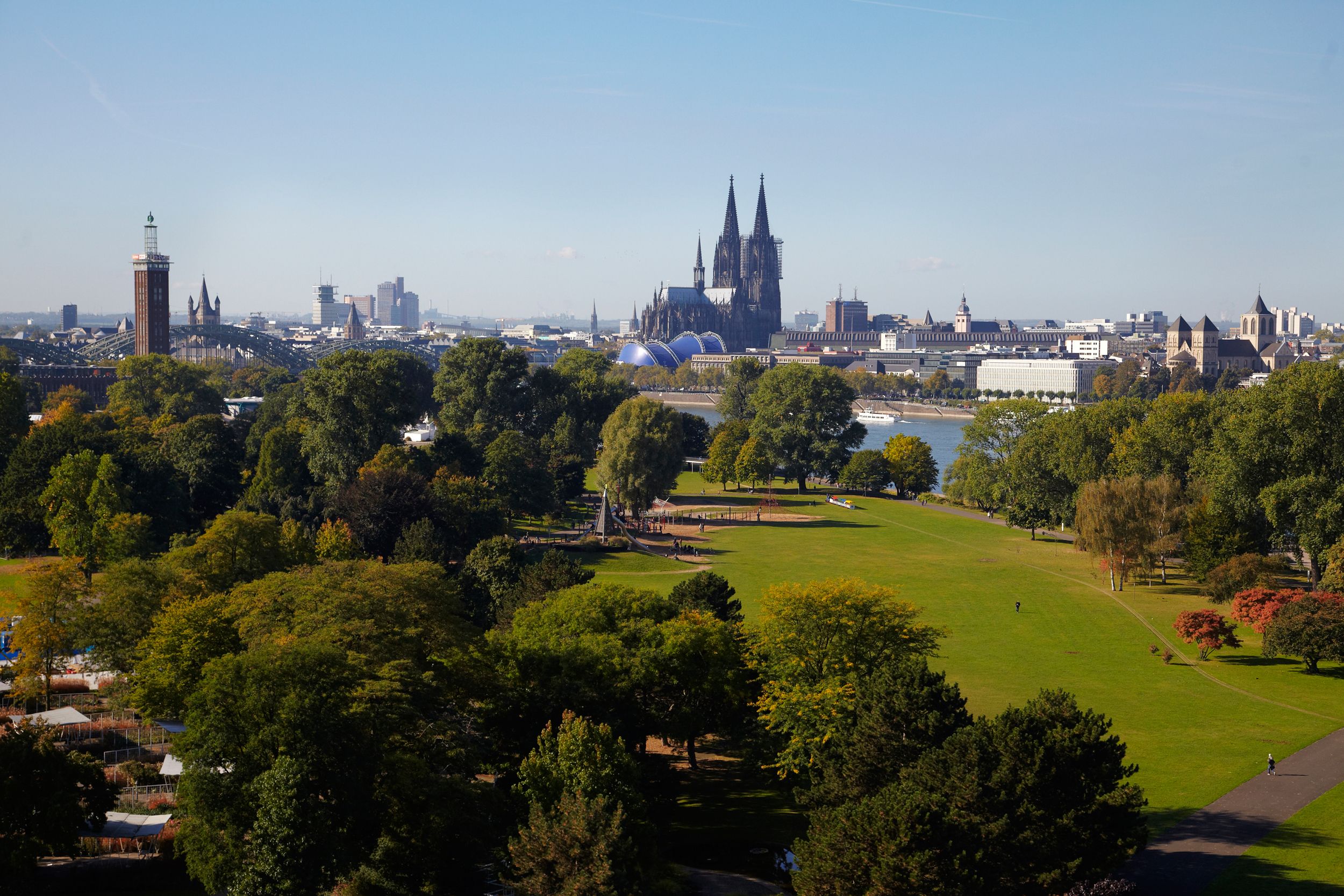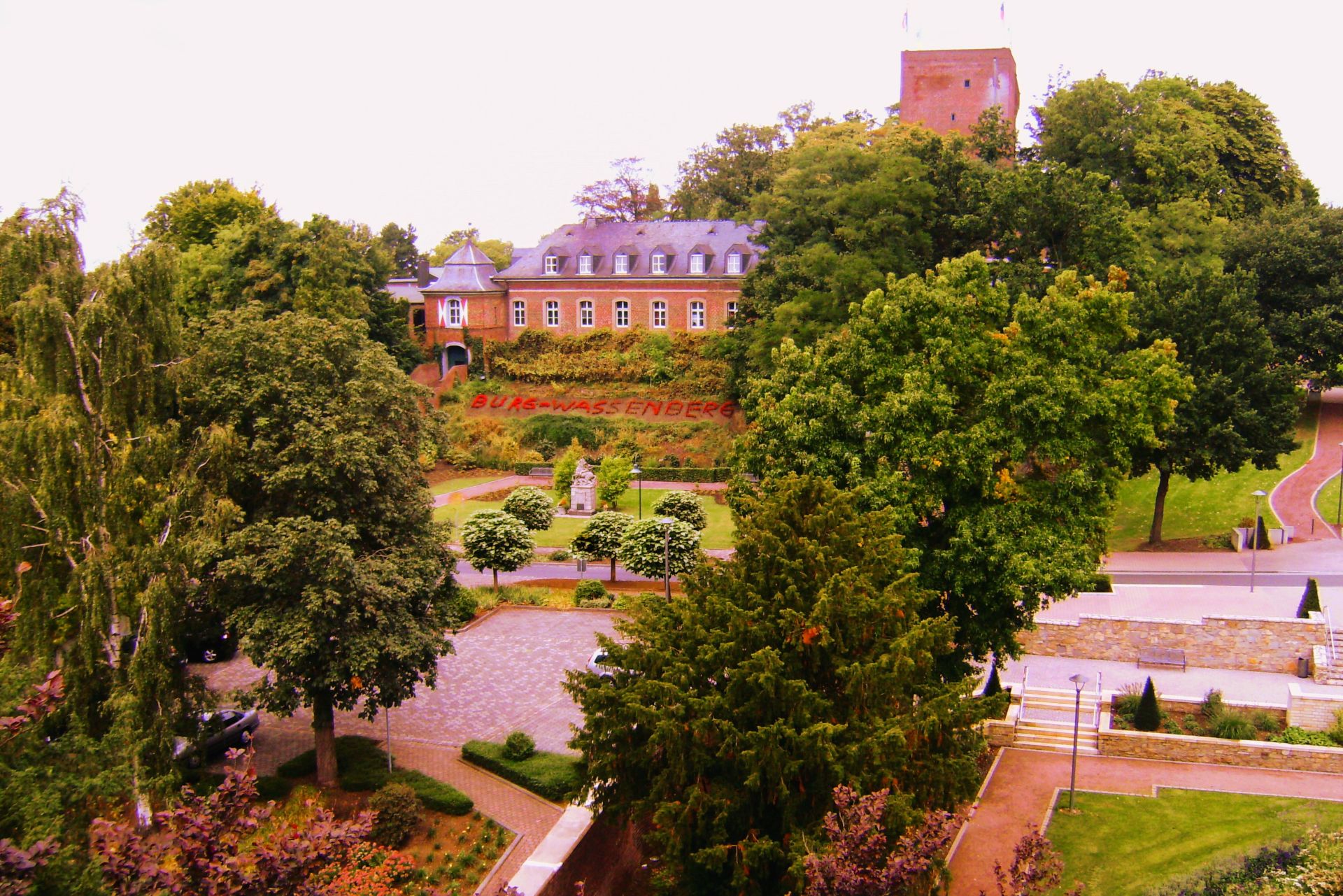The city pulsates. Cars roar through the streets. People go about their daily business. But as soon as those seeking balance enter the Nordpark, a different world surrounds them: the noise fades, the eye catches wide green spaces, majestic trees, memorable art and the glittering play of water.
The mighty sculptures of the "Rossebändiger" by Edwin Scharff stand like silent sentinels on Kaiserswerther Straße. The mythical twins Castor and Pollux and their animals welcome guests with powerful elegance and seeming severity. They are witnesses to a time when the approximately 36.5-hectare Nordpark was built for the "Great Reich Exhibition of the Creative People" in 1937 according to plans by the then Düsseldorf garden office director Willi Tapp. The symbiosis of history and landscape architecture that characterizes the park can already be seen here. Just a few steps further on, the 170-metre-long water axis with its bubbling fountain basin announces itself - a gently rippling prelude to a walk through one of Düsseldorf's most interesting parks in terms of design.
Sculptures represent professions
As the view widens along the water axis, the park's design concept becomes clear: here, geometric determination meets natural lightness. The curved follows the straight. The past complements the modern. This is also reflected in the presentation of other sculptural works. Numerous contemporary sculptures enrich the park's green spaces, but along the water axis, explorers first encounter the twelve "Ständische" - sculptures created by Düsseldorf sculptors for the Imperial Exhibition. They represent the professions and estates of the "working people". Farmer, farmer's wife, fisherman, falconer, vintner and shepherdess tell their stories here. The remaining six works were lost during the Reich Exhibition in 1937.
From here, the path leads to the fountain square, the undisputed centerpiece of the park. With its artistic fountain, the space-creating colonnades (pergolas) and the adjoining "Ballhaus" exhibition hall, it magically attracts visitors. Here, water fountains dance from 160 spray nozzles in a perfectly coordinated choreography. The interplay of movement, light and reflection lends the scenery an almost meditative character. Visitors linger, take a deep breath and let the picturesque image sink in.
Into another hemisphere
But the Nordpark does not only reveal its beauty in stone and water. Step by step, the surroundings become more vibrant and the colors gain in intensity. On the expansive lawns of the garden axis, in the flower ring or on the terraced levels of the so-called dance ring, colorful plants raise their heads to the sky, while flowers in all shades shine in competition.
The colors remain. Green dominates above all. But the atmosphere changes. It becomes calmer, almost enraptured. As if through a hidden gate, explorers enter a completely different hemisphere: the Japanese Garden in the north-west of the park. This Far Eastern oasis radiates grace and tranquillity. Pine trees, artfully pruned using the traditional Niwaki technique, line the curved paths. Japanese fan maples glow a rich red, and fine stone lanterns cast mysterious shadows on small ponds. This gift from Düsseldorf's Japanese community is more than just a garden - it is a poem of stone, water and plants.
Before leaving the park, visitors should take a detour to the cactus and summer flower garden or the Aquazoo with Löbbecke Museum. Here, the zoo, aquarium and natural history museum are combined in one building and offer insights into the fascinating animal world. In the centrally located facility in the park, animal lovers young and old can marvel at around 5000 animals from 500 species whose habitats are closely linked to water. The institution attracts 500,000 visitors every year, who not only love the animal world, but also appreciate natural objects from the fields of biology, geology and palaeontology. So ends a walk through the Nordpark, which is much more than just a green space.
